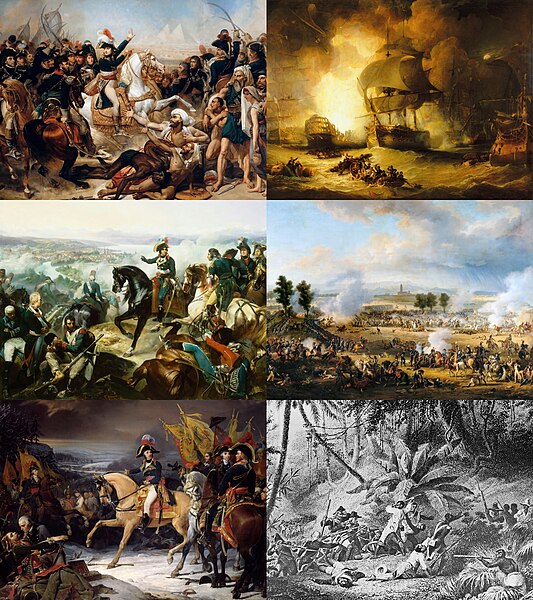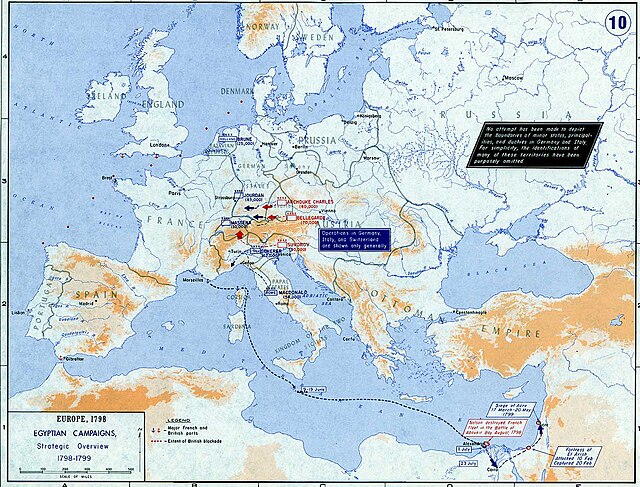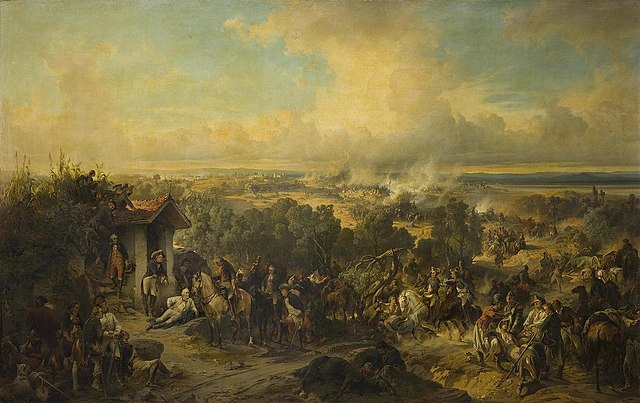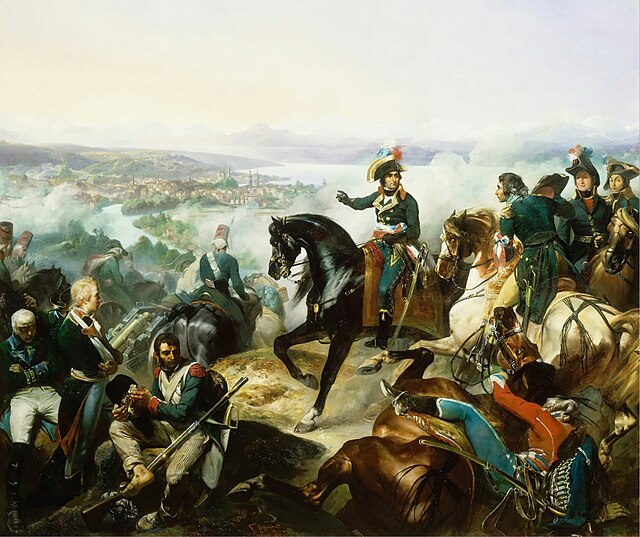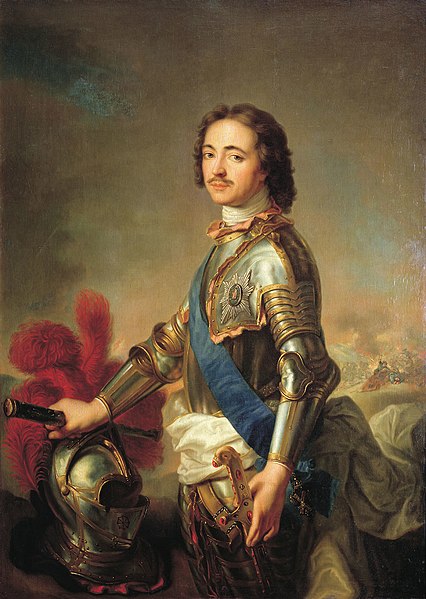War of the Second Coalition
The War of the Second Coalition was the second war targeting revolutionary France by many European monarchies, led by Britain, Austria, and Russia and including the Ottoman Empire, Portugal, Naples and various German monarchies. Prussia did not join the coalition, while Spain supported France.
War of the Second Coalition
Strategic overview of operations in Europe and the Mediterranean in 1798–1799
Field Marshal Suvorov at the Battle of the Trebbia
General Masséna at the Second Battle of Zurich
The Russian Empire, also known as Imperial Russia or simply Russia, was a vast realm that spanned most of northern Eurasia from its proclamation in November 1721 until its dissolution in March 1917. At its height in the late 19th century, it covered about 22,800,000 square kilometres (8,800,000 sq mi), roughly one-sixth of the world's landmass, making it the third-largest empire in history, surpassed only by the British and Mongol empires; it also held colonies in North America between 1799 and 1867. The empire's 1897 census, the only one it conducted, found a population of 125.6 million with considerable ethnic, linguistic, religious, and socioeconomic diversity.
The Victory at Poltava, painted by Alexander von Kotzebue in 1862
Peter the Great officially proclaimed the Russian Empire in 1721 and became its first emperor. He instituted sweeping reforms and oversaw the transformation of Russia into a major European power. Painting by Jean-Marc Nattier, 1717.
Empress Catherine the Great, who reigned from 1762 to 1796, continued the empire's expansion and modernization. Considering herself an enlightened absolutist, she played a key role in the Russian Enlightenment (painted in the 1780s).
1764, Rouble Catherine II ММД - Krasny Mint

